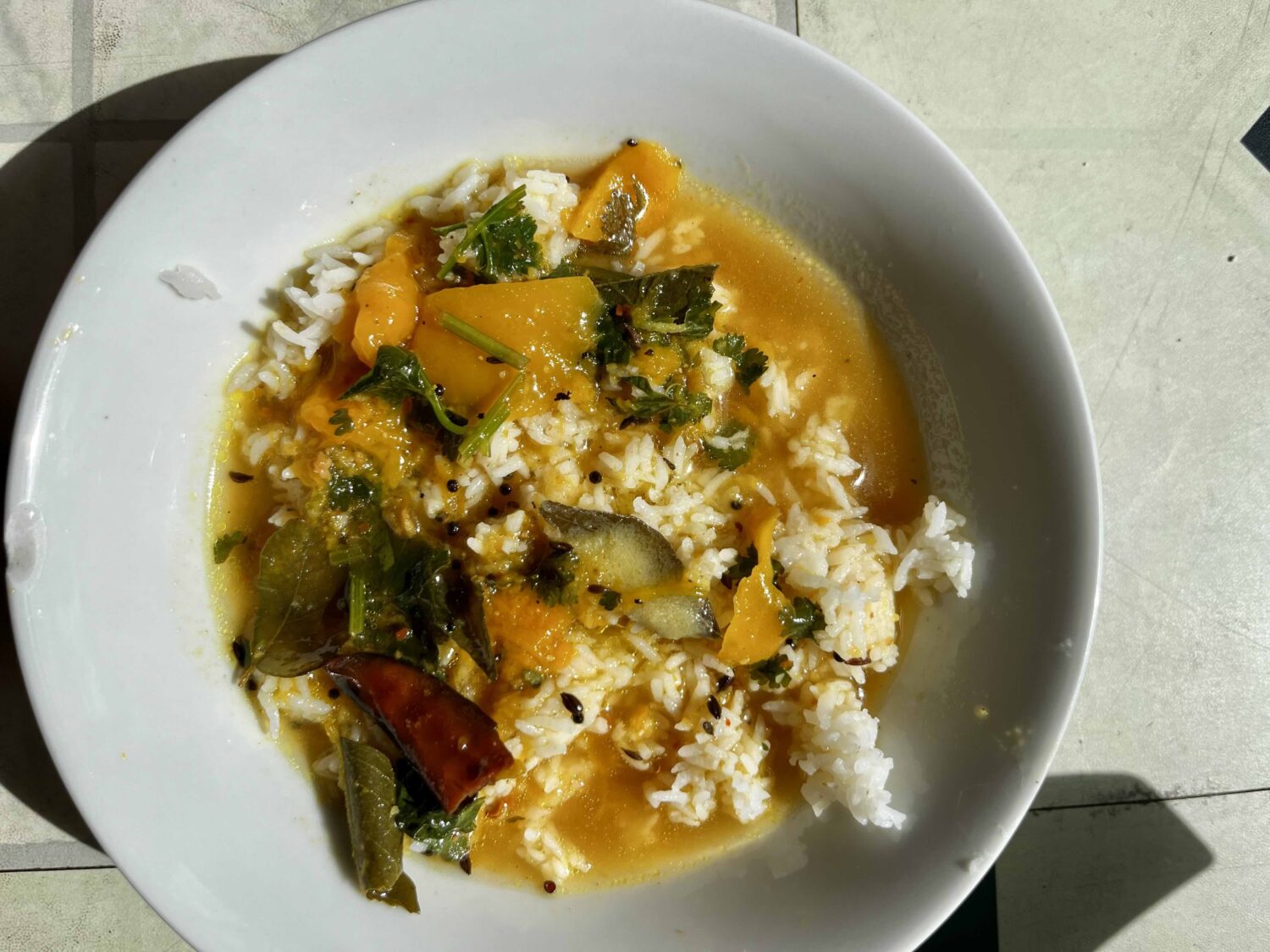A Hot and Fragrant Rule-Breaking Mango Rasam to Start the Summer As You Mean to Go On
By Apoorva SripathiThere are too many tenets in cooking; it shouldn’t be this way. Thinking in a certain, rigid manner about cooking stresses me out and renders me irascible, so I make rasam to remind myself of the volatility of the act and also to remember what my mother often says about making rasam, cooking, and life itself – a simple edict, which is that there are no rules. There are no rules.
When it comes to rasam, there are more naysayers and killjoys than cheerleaders – ‘don’t boil it for too long’, ‘always add dal’, ‘don’t skip fresh tomatoes’, ‘roast the powder in oil’, but how you make rasam really is how you live your life. I like experiments and substitutions and going against the grain, hence this recipe for mango rasam.
But it is in no way avant-garde (pineapple rasam already exists). I had a glut of mangoes, ripened and surrendering themselves on my kitchen counter so it made sense to turn one of them into rasam and the result is a broth that is fragrant, sweet, sour, and spicy – just the stuff that recipe writers’ dreams are made of, a combination of flavours that sing of pleasure and joy. It is great mixed with hot rice but equally refreshing as a standalone drink.
If you’re asking me about the caveats for (this) rasam, the absolute non-negotiables, I can tell you the truths: use whatever you have on hand, substitute if you feel brave enough or not at all, and maybe don’t skip the tempering at the end – it carries the dish’s essence, which is what rasam means in Tamil.

Serves 4
Ingredients
- Juice, pulp, and stone from one small, ripe mango
- A small ball of tamarind soaking in ½ cup of hot water (or mix a tablespoon of tamarind paste in ½ cup hot water)
- 1 teaspoon grated ginger
- 1 teaspoon of ghee (optional)
- 2 fresh curry leaves
- ½ teaspoon turmeric powder
- 1 green chilli, slit from the stalk
- Salt to taste
- 1 tablespoon coriander powder + 2 teaspoons cumin powder + 2 teaspoons chilli powder + 1 teaspoon ground black pepper + a scant teaspoon of garlic granules (this is a quick alternative to rasam powder)
- A handful of chopped fresh coriander, to garnish
For the rasam powder, grind together
- 3 tablespoons coriander seeds
- 2 tablespoons cumin seeds
- 2 tablespoons toor dal
- 8 dried red chillies
- 4 teaspoons black pepper
- 8-10 dried curry leaves
For the final tempering
- 2 tablespoons ghee
- 1 teaspoon mustard seeds
- ½ teaspoon cumin seeds
- 2 dried red chillies, broken into halves (or a green chilli slit down the middle)
- 4-5 curry leaves
- A pinch of asafoetida



Recipe
Soak the tamarind in hot water for about 30 minutes before starting everything. Make the rasam powder ahead of time and store in a clean jar. Strain the water from the soaking tamarind and set it aside.
In a medium saucepan on a high flame, add the pulp, juice, and the mango stone and top it with the tamarind water plus another ½ cup of hot water. Add in a tablespoon of the rasam powder (or the alternative rasam powder mix), the grated ginger, a spoon of ghee, curry leaves, turmeric powder, and the green chilli. Bring to a rolling boil and let the broth reduce in volume, to about three-quarters to half of the original quantity.
Once reduced, top it with ¼-½ cup of hot water and reduce the flame to low. Once you see the mixture froth gently on top from all sides, add a teaspoon of salt and lots of chopped fresh coriander and close the lid for the flavours to infuse. In a small frying pan on high, add the ghee. Once it’s hot, add the mustard seeds and when they pop, add all the other ingredients and give it a swirl so the fat is infused with the spices. Stir this into the rasam and close back with the lid on for at least five minutes. Taste and adjust salt as necessary – you can also add in a squeeze of lemon if you like. Serve hot mixed with rice or drink as a soup. There are no rules.
Apoorva Sripathi is a writer and editor from Chennai, and the co-founder of the independent magazine CHEESE. She also writes shelf offering, a food and culture newsletter. You can find all her work at apoorvasripathi.com. All photography by Apoorva Sripathi.
You can read all of Apoorva’s recipes on Something Curated here.